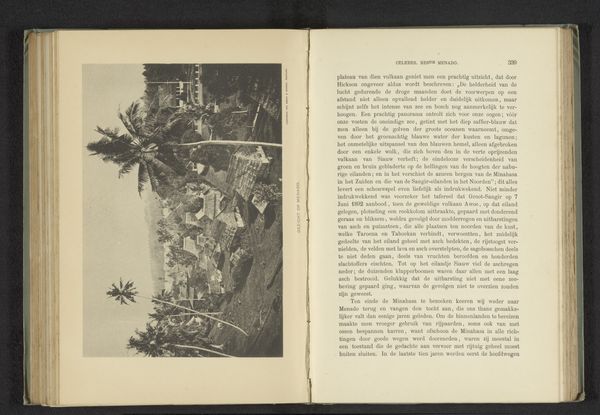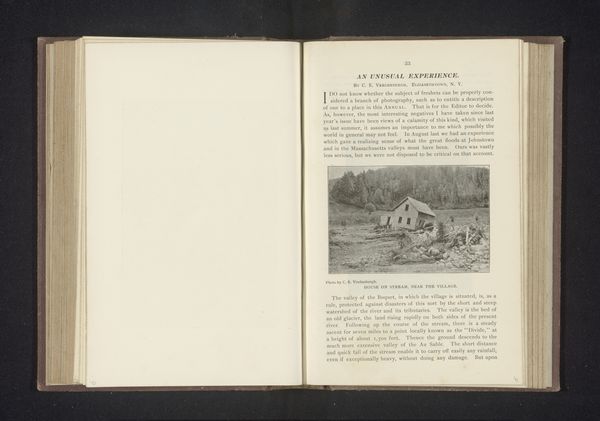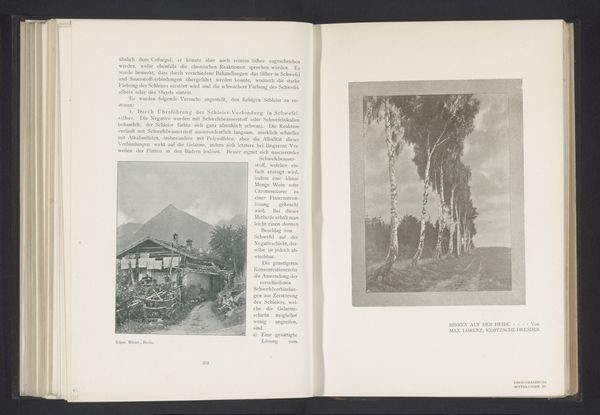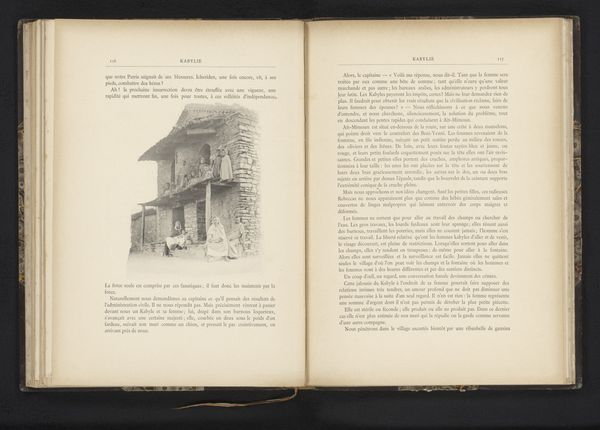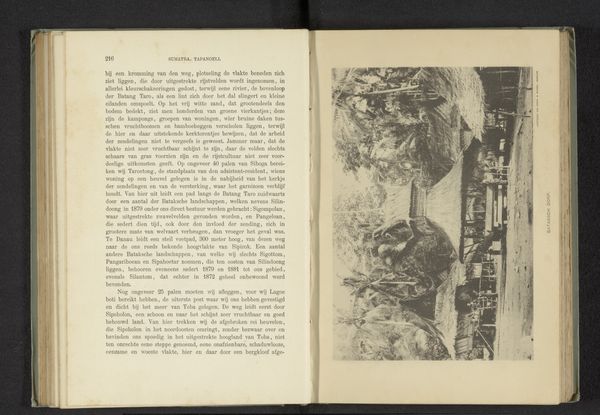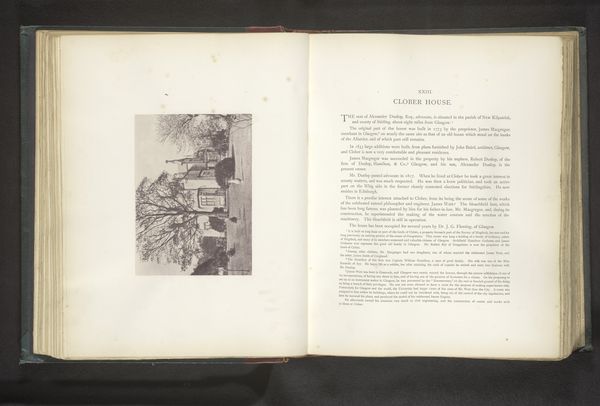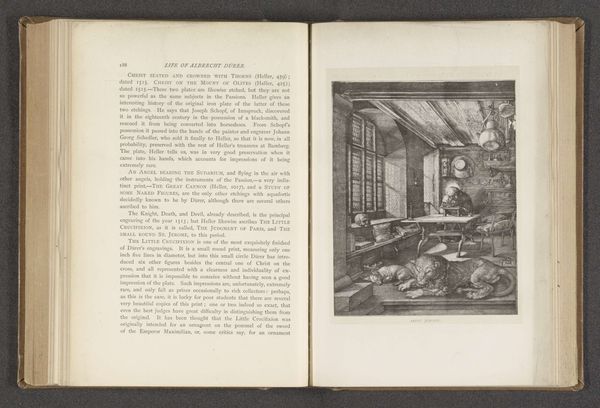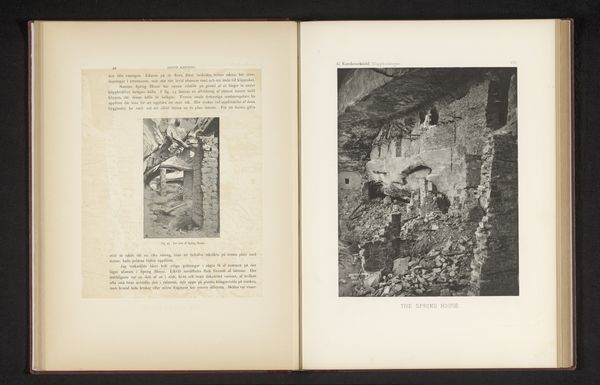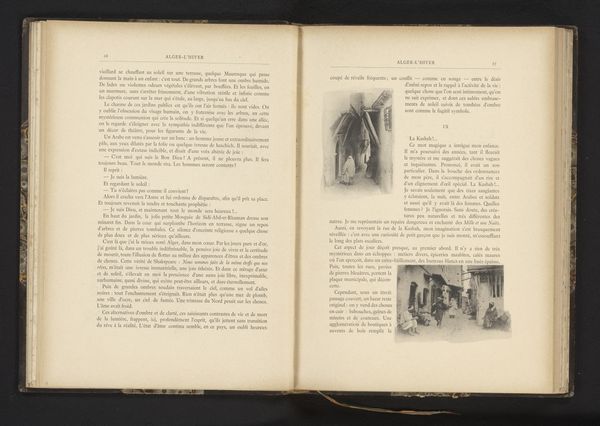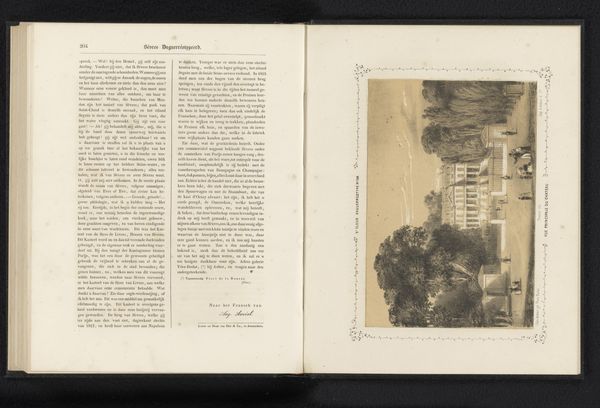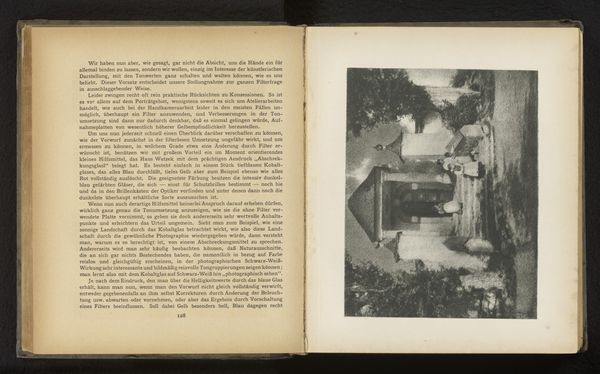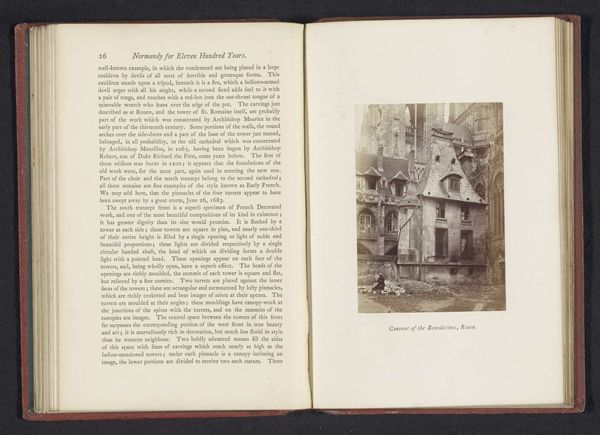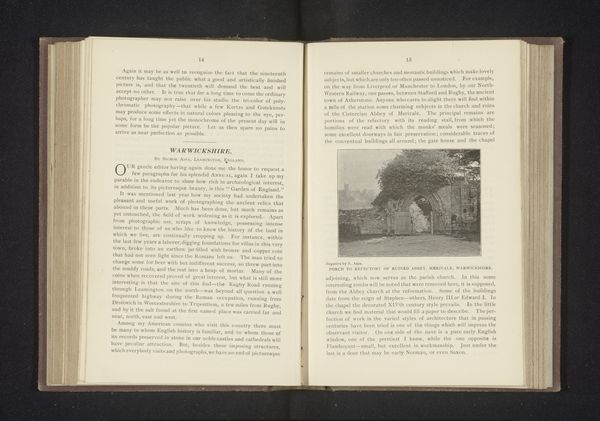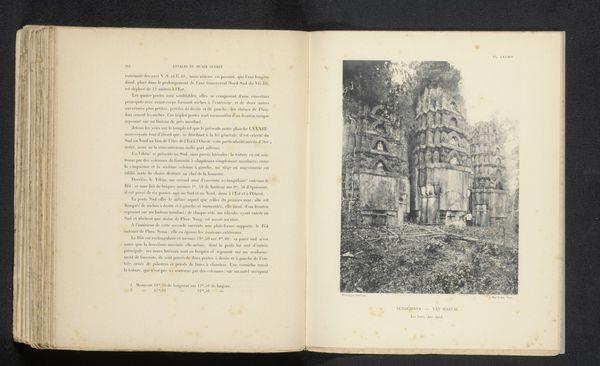
Fotoreproductie van een foto door Hans Watzek, voorstellend een Tiroler huis before 1907
0:00
0:00
print, photography
#
pictorialism
# print
#
landscape
#
german-expressionism
#
photography
Dimensions: height 120 mm, width 93 mm
Copyright: Rijks Museum: Open Domain
Curator: Looking at this image, I'm struck by its almost dreamlike quality. The soft focus creates an ethereal feel. Editor: This is a reproduction of a photograph titled "Fotoreproductie van een foto door Hans Watzek, voorstellend een Tiroler huis", or "Photographic reproduction of a photograph by Hans Watzek, representing a Tyrolean house," made sometime before 1907. It's an early print, typical of pictorialism with its manipulation of photographic processes. Curator: Pictorialism, right. It definitely pulls photography toward the aesthetic realm of painting, softening reality for expressive effect. I notice the gum print; you can really see the textures introduced through that process. The way the details in the Tyrolean house almost dissolve into the misty background seems to celebrate craft itself. Editor: Precisely. This was a deliberate artistic choice, one made within the debates around the role of photography and art, especially within the circles connected to German Expressionism at the time. The gum printing process allowed the photographer to really control the final image, challenging industrial photographic reproduction in the era, which was very much about its claims to objective clarity. Think about how photographs were being utilized increasingly by state powers during this period too. Curator: So, it's pushing back against that almost clinical exactitude of documentation in favor of... what? Evoking a particular atmosphere? And the act of altering the process elevates the photographer’s manual labor, blurring the lines between the art object and skilled craft work, it seems? Editor: In some ways, it's very connected to that era's questioning of artistic authenticity. Who gets to represent what? This image enters into dialogue on a host of social concerns. The marketing of a certain idealized past and also how notions about folk and national identity circulate through such cultural products. The gum printing and soft focus become the techniques to give form to this. Curator: Right, so, on one level, it seems about capturing a specific place but then transforming it through manipulation, almost an industrial echo of Romantic-era paintings? The image of this particular building would hold various resonances depending on who consumes the image, how. It would certainly reflect the aesthetic sensibilities of that turn-of-the-century, a really interesting insight on photographic and art-making processes in the early twentieth century. Editor: Absolutely. Examining pieces such as this shows us so much of the social fabric and tensions around art itself back then, through the lens and the labor behind image making.
Comments
No comments
Be the first to comment and join the conversation on the ultimate creative platform.
